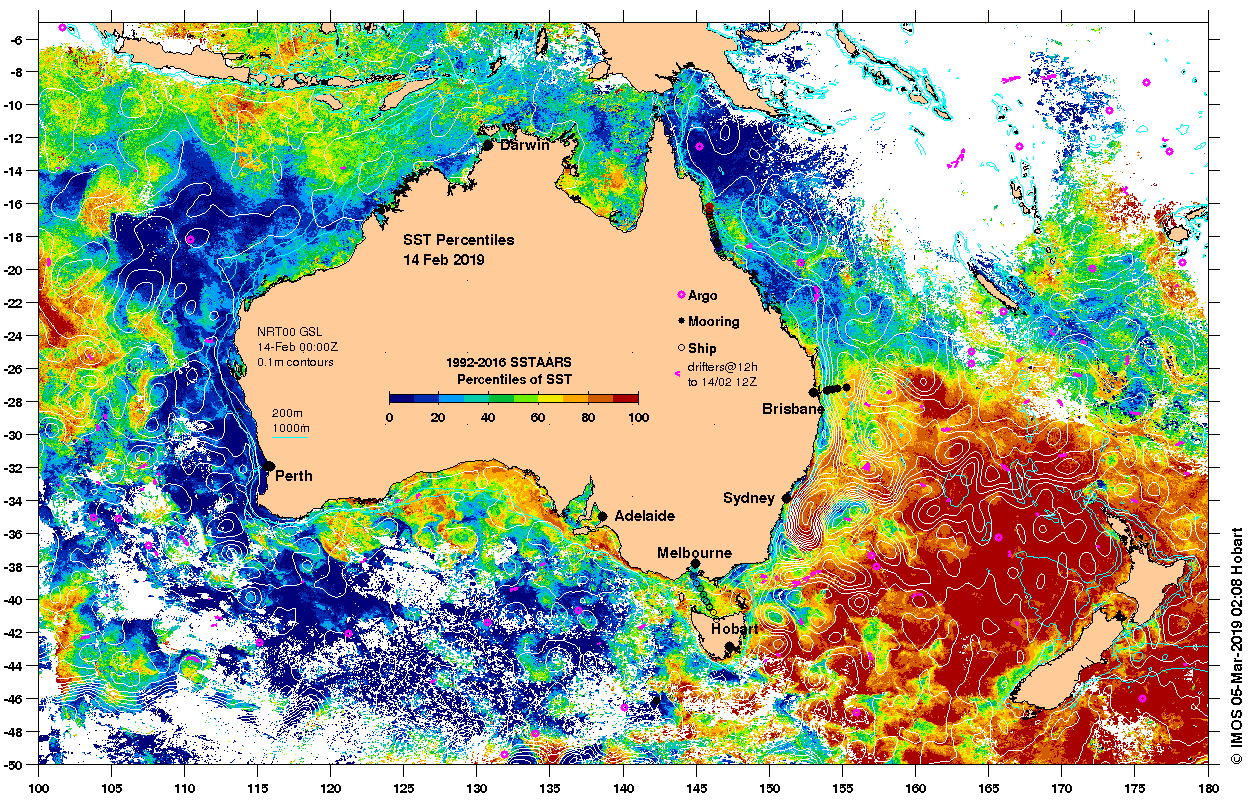A new paper outlines the need for predicting marine heatwaves and highlights how IMOS is monitoring heatwaves in real time as they develop with ocean gliders.
Leading ocean and climate scientists from across Australia and the world have published a paper today in the journal Nature Reviews Earth and Environment highlights the need for developing systems to predict marine heatwaves, which are a growing threat to marine ecosystems and industries as the climate changes.
Marine heatwaves are prolonged extreme oceanic warm water events, that can have devasting impacts on marine ecosystems.
“Over the past century, the global-average number of marine heatwave days per year has increased by more than 50 per cent – a trend expected to accelerate under future climate change,” lead author IMAS Professor Neil Holbrook said.
“Marine heatwaves can lead to devastating environmental and economic impacts, including biodiversity loss, coral bleaching and declines in the extent of seagrass meadows and kelp forests, changes in fishery catch rates, and mortality or reduced performance of farmed aquaculture species.”
But unlike terrestrial heatwaves and other extreme weather events such as cyclones, knowledge of marine heatwaves and their causes have been relatively crude, which has hampered our ability to predict them.
The paper explores marine heatwave predictability on on short-term, interannual to decadal, and centennial timescales, focusing on the physical processes that offer prediction. While there may be potential predictability of marine heatwaves days to years in advance, accuracy will vary dramatically depending on the regions and drivers.
The near real-time monitoring of marine heatwaves requires temperature data on a range of spatial scales and depths. Satellite sensors provide a suite of global and regional ocean surface information, including SST, sea level, currents and winds. Whilst in situ data from Argo floats, ocean gliders and moorings provide information on subsurface conditions.
The paper highlights how in the Australian region IMOS is already providing near real-time summaries of surface currents and SST (via IMOS OceanCurrent), which when combined with climatology data, indicates the presence of marine heatwaves. Providing valuable information for the public, aquaculture industries, tourism operators in the marine environment and local communities.
Event-based monitoring, such as that IMOS is providing with our ocean gliders, offers targeted information for marine stakeholders once a marine heatwave event has started.
The ability to measure temperature but also key bio-physical variables aids in understanding the growth, peak and decay of these extreme ocean temperature events and their potential impacts on the marine environment.
The data provided by an IMOS ocean glider deployed during the 2018/19 Tasman Sea marine heatwave off Tasmania provided crucial information about the depth and characteristics of that event. This near real-time data was shared with regional stakeholders, including local marine industries such as salmon and oyster aquaculture.
IMOS continues to provide valuable real time monitoring of marine heatwaves in Australia, which helps better our understanding of the physical processes and inform adaptive management.
Some of the text of this news article is from the IMAS media release. The research was supported by the Australian Research Council funded Centre of Excellence for Climate Extremes (CLEX), the Earth Systems and Climate Change Hub and the Tropical Water Quality Hub of the Australian Government’s National Environmental Science Program, and Australia’s Integrated Marine Observing System (IMOS).
